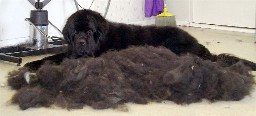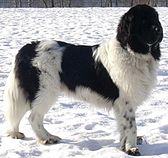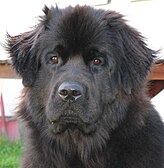
The Labrador Retriever, often abbreviated to Labrador, is a breed of retriever-gun dog from the United Kingdom that was developed from imported Canadian fishing dogs. The Labrador is one of the most popular dog breeds in a number of countries in the world, particularly in the western world.

The Vizsla is a dog breed from Hungary and belongs to the Federation Cynologique Internationale (FCI) group 7, the Canadian Kennel Club (CKC) group 1, and the American Kennel Club. Its name means "searcher" or "tracker" in Hungarian. The Hungarian or Magyar Vizsla or Smooth-Haired Vizsla are sporting dogs and loyal companions. The Vizsla's medium size is one of the breed's most appealing characteristics. As a hunter of fowl and upland game, the Vizsla has held a prominent position among sporting dogs – that of household companion and family dog.
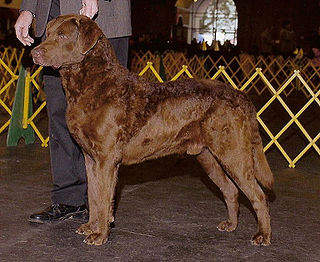
The Chesapeake Bay Retriever is a large-sized breed of dog belonging to the Retriever, Gundog, and Sporting breed groups. The breed was developed in the United States Chesapeake Bay area during the 19th century. Historically used by area market hunters to retrieve waterfowl, pull fishing nets, and rescue fishermen, it is primarily a family pet and hunting companion. They are often known for their love of water and their ability to hunt. It is a medium to large sized dog similar in appearance to the Labrador Retriever. The Chesapeake has a wavy coat, rather than the Labrador's smooth coat. They are described as having a bright and happy disposition, courage, willingness to work, alertness, intelligence, and love of water as some of their characteristics.
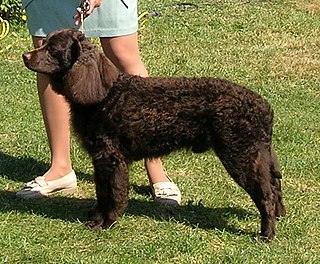
The American Water Spaniel,, is a breed of spaniel which originated in the United States. It was developed in the state of Wisconsin during the 19th century from a number of other breeds, including the Irish and English Water Spaniels. The breed was saved by Dr. Fred J. Pfeifer, who set up the breed club and standard, and whose work led to recognition for the breed by the United Kennel Club, and later, the American Kennel Club. While they are the state dog of Wisconsin, they remain a rare breed.

The Barbet is a breed of dog; it is a medium-sized French water dog. It is listed in Group 8 by the Société Centrale Canine, the French Kennel Club and the Fédération Cynologique Internationale.
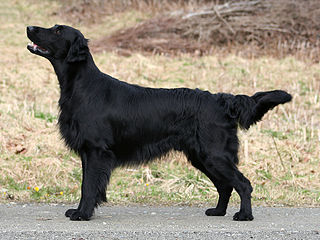
The Flat-coated Retriever is a gundog breed originating from England. It was developed as a retriever both on land and in the water.

The Poodle is a dog breed that comes in three varieties: Standard Poodle, Miniature Poodle, and Toy Poodle. The breed’s origin is disputed: whether it descends from Germany as a type of water dog, or from the French Barbet.

The St. Bernard or St Bernard is a breed of very large working dog from the western Alps in Italy and Switzerland. They were originally bred for rescue work by the hospice of the Great St Bernard Pass on the Italian-Swiss border. The hospice, built by and named after Italian monk Bernard of Menthon, acquired its first dogs between 1660 and 1670. The breed has become famous through tales of Alpine rescues, as well as for its large size.

The Portuguese Water Dog is a breed of dog. It is classified as a working dog by the American Kennel Club. Portuguese Water Dogs are originally from the Portuguese region of the Algarve, from where the breed expanded to all around Portugal's coast, where they were taught to herd fish into fishermen's nets, retrieve lost tackle or broken nets, and act as couriers from ship to ship, or ship to shore. Portuguese Water Dogs rode in fishing trawlers as they worked their way from the Atlantic waters of Portugal to the waters off the coast of Iceland fishing for cod.

The Nova Scotia Duck Tolling Retriever is a medium-sized gundog bred primarily for hunting. It is often referred to as a "toller". It is the smallest of the retrievers, and is often mistaken for a small Golden Retriever. Tollers are known to be intelligent, easy to please, alert, and high-energy dogs. The name "toller" is derived from their ability to lure waterfowl within gunshot range. The breed originated in Yarmouth County, Nova Scotia, Canada. The American Kennel Club ranks the toller as the 87th most popular dog breed.

The Cane Corso is an Italian breed of mastiff. It is used for personal protection, tracking, law enforcement, as a guard dog, and as a companion dog.
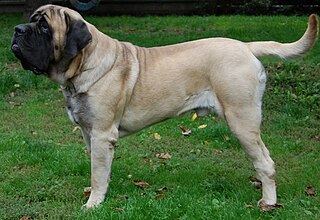
The English Mastiff is a breed of large dog. The breed is referred to simply as the Mastiff by national kennel clubs, including the United Kingdom's Kennel Club and the Fédération Cynologique Internationale. They perhaps descended from the ancient Alaunt and Pugnaces Britanniae, with a significant input from the Alpine Mastiff in the 19th century. Distinguished by its enormous size, massive head, short coat in a limited range of colours, and always displaying a black mask, the Mastiff is noted for its gentle and loving nature. The lineage of modern dogs can be traced back to the early 19th century, but the modern type was stabilised in the 1880s and refined since. Following a period of sharp decline, the Mastiff has increased its worldwide popularity. Throughout its history the Mastiff has contributed to the development of a number of dog breeds, some generally known as mastiff-type dogs, or, confusingly, just as "mastiffs".

The Otterhound is a British dog breed. It is a scent hound and is currently recognised by the Kennel Club as a Vulnerable Native Breed with around 600 animals worldwide.

The Leonberger is a dog breed, whose name derives from the city of Leonberg in Baden-Württemberg, Germany. According to legend, the Leonberger was ostensibly bred as a "symbolic dog" that would mimic the lion in the town coat of arms.
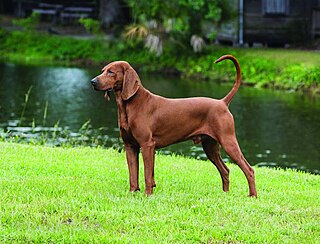
The Redbone Coonhound is a tenacious hunting dog used for hunting raccoon, deer, bear, boar, cougar, or any other large game. The breed originated in the Southern United States and is highlighted by their deep red coat. Described by the American Kennel Club as having "an overall impression that a master sculptor carved them from blocks of the finest mahogany," the Redbone blends an unrelenting hunter with a loving family dog.

The Bully Kutta is a type of large dog that originated in the Indian subcontinent, dating back to the 16th century. The Bully Kutta is a working dog used for hunting and guarding. The type is popular in the Punjab region of India and Pakistan, including Haryana and Delhi, as well as Tamil Nadu.

The Tweed Water Spaniel, or Tweed Spaniel, is a breed of dog extinct since the 19th century. It is best known for being involved in the early development of the modern Curly Coated Retriever and Golden Retriever breeds of dogs. They were described as generally brown, athletic dogs from the area around Berwick-upon-Tweed near the River Tweed and close to the Scottish Borders. A type of water dog, the breed was not well known outside the local area. This breed may have been created by crossing local water dogs with imported St. John's water dog, another breed which is also now extinct.
The Moscow Water Dog, also known as the Moscow Diver, Moscow Retriever or Moskovsky Vodolaz, is a little-known dog breed derived from the Newfoundland, Caucasian Shepherd Dog and East European Shepherd. It is now extinct, but was used in the development of the Black Russian Terrier. The Moscow Water Dog was produced only by the Red Star Kennels, the state-operated organization chartered to provide working dogs for the armed services of the Soviet Union.
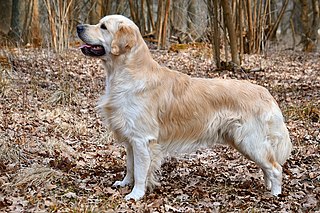
The Golden Retriever is a medium-large gun dog that was bred to retrieve shot waterfowl, such as ducks and upland game birds, during hunting and shooting parties. The name "retriever" refers to the breed's ability to retrieve shot game undamaged due to their soft mouth. Golden retrievers have an instinctive love of water, and are easy to train to basic or advanced obedience standards. They are a long-coated breed, with a dense inner coat that provides them with adequate warmth in the outdoors, and an outer coat that lies flat against their bodies and repels water. Golden retrievers are well suited to residency in suburban or country environments. They shed copiously, particularly at the change of seasons, and require fairly regular grooming. The Golden Retriever was originally bred in Scotland in the mid-19th century.
The Intelligence of Dogs is a 1994 book on dog intelligence by Stanley Coren, a professor of canine psychology at the University of British Columbia. The book explains Coren's theories about the differences in intelligence between various breeds of dogs. Coren published a second edition in 2006.




